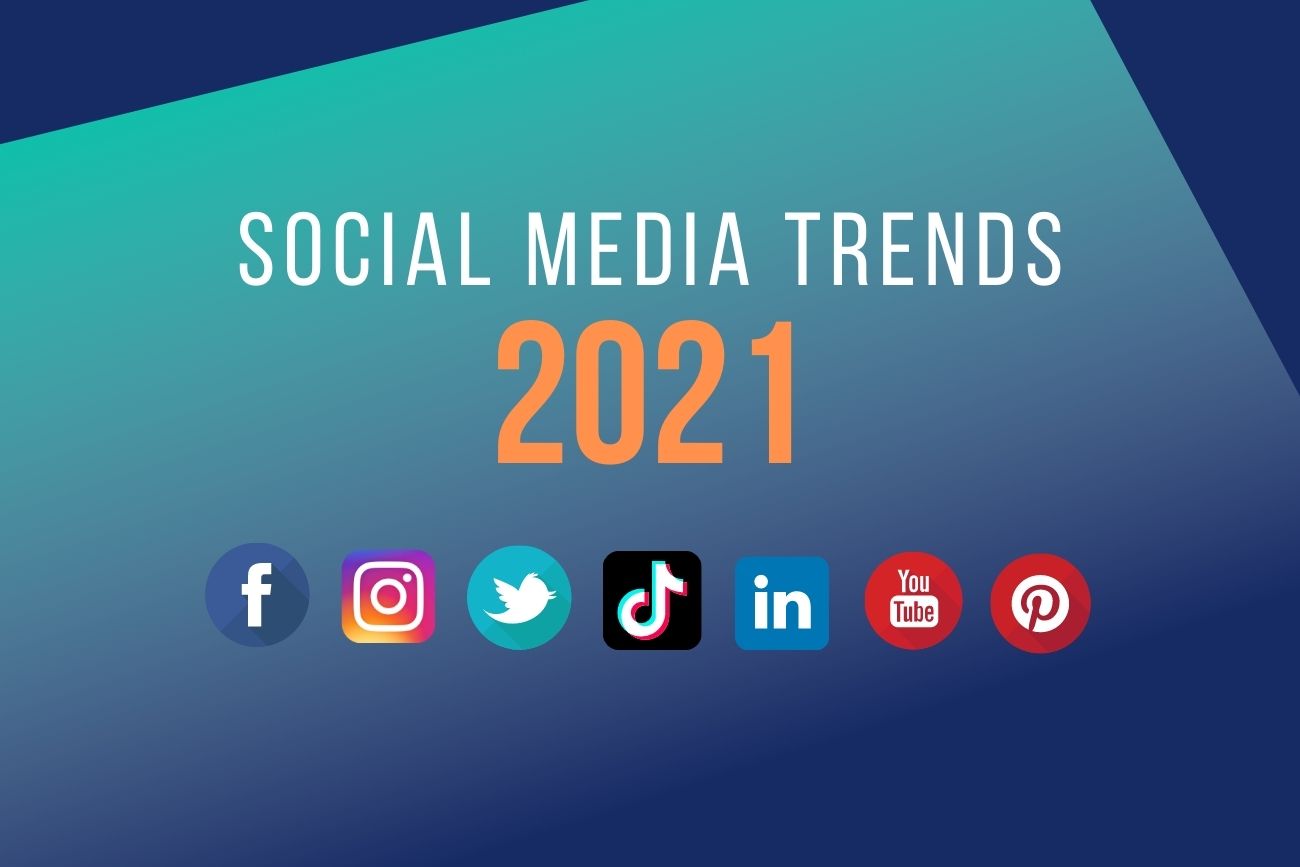In today’s world, it is nearly impossible to find someone without any social media presence. From Instagram and Facebook to YouTube and TikTok, everyone must have at least an account on either one of those social media platforms. Especially with COVID-19, social media has become an essential to people’s everyday life. People’s behavior toward social media has also shifted a lot since 2020 and it is time businesses learn to catch up with the social media trends for 2021. Here are the top 5 social media trends for 2021 that all businesses must know about:
Authenticity, inclusivity, and activism
While each generation group has different spending habits, what they now all have in common is the demand for brands to get real. Consumers want transparency and authenticity more than anything today. The financial uncertainty that the pandemic has brought makes consumers need more than just great deals to trust, identify with, and invest in a brand. They want to see the more “human” side of brands rather than just a polished, photoshopped, “perfect” version of things. They want to hear about the experience from a fellow customer who has tried your product before. They also want to know that the brands they buy from share the same values and beliefs as them. They want to feel as if your brand is there for them as a “friend”, and not just for a money transaction. Not only that, consumers need brands to stand up and take accountability when mistakes happen. Own up to it through a heartfelt social media message. Allow your customers to freely reach out to you in case of any problems or disappointments. And instead of deleting negative comments, openly address them and show them how much you care about their problems.
2020 has witnessed social issues being brought to light more than ever before, from racial discrimination against black and Asian people, to sexual assault and abuse among women. As a result, you can no longer afford to be silent and passive about issues that your target audience passionately cares about. Thus, brands are increasingly under pressure to make meaningful strides for inclusion in their business operations and marketing. Audiences are more aware than ever that they have plenty of options, leading them to put their money behind companies that show investment in the communities and issues they are passionate about. However, audiences are also increasingly aware of performative activism that looks more like a marketing play rather than a meaningful contribution — make sure your content on inclusivity is well-informed and make sure your brand is ready to act. These important social issues can’t just be treated like another trending topic. 2021 will require brands to focus even more on inclusivity if they want to build a trusted foundation with their consumers.
While social media has always driven engagement with causes, the global pandemic has shined an even brighter spotlight on these causes. People want to help more than ever, and they expect brands to pitch in. In fact, 74% of respondents in a Twitter survey want brands to showcase acts of kindness. And 77% feel more positively about brands that try to support society during this crisis. So even for 2021, we’re likely to see brands helping out however they can through purpose-driven social media campaigns. 86% of respondents in the survey want brands to support vulnerable members of the community. And 82% of respondents expect more support for frontline health staff.
Live streaming, stories and videos
The pandemic has made consumers demand the need for “human interactions”, which is why we see a huge increase in brands utilizing the live streaming features. Many brands are using Facebook, Instagram, Twitch, and Twitter to live stream events, Q&As, tutorials and other types of content. These types of content keep your followers engaged with your brand by bringing an event they otherwise might not be able to attend directly to their screens. While the situation continues to evolve in 2021, people have gotten used to being able to interact with brands live without ever leaving their homes. So live streaming will continue to gain popularity and should definitely be a part of your social media marketing strategy.
Today, people’s attention spans are short, and the way they like to consume content has also changed. This is why content formats like Stories have become popular. They are short, engaging, and addictive in a way that people can spend hours scrolling through one Story after another. This is evident by the substantial rise in Instagram Stories’ daily active users, as shown below.

The similarities apply to video contents as well. Video content is one of the most engaging forms of content and will soon dominate social media, a clear winner over all other content types. Whether it is short-form videos like those popular on TikTok or Stories or long-form content on YouTube, videos are the future of social media content. According to a Cisco study, by 2022, 82% of all online content will be video content. This clearly shows how important it is to start utilizing video content to stay relevant in the social media domain.
You can start by using features like Stories both for your social media content and for advertisements. You can also add videos to your social media posts, even on platforms traditionally dominated by image or text content.
Conversational and valuable content
In order to “get real”, it is important that brands become more conversational as a way to stir up interactions as well as improve on customer engagement. 2020 brands communication strategy should be more focused on helping a user with something, educating them about a product, and nurturing them to conversion with a more thoughtful or empathic tone. A healthy combination of AI and human interaction could enable brands to run efficiently on social media while still giving consumers the authenticity they need to see to trust a brand and make a purchase. For example, a bot could handle quick message queries, while sales, service, or community management reps could respond to more complex questions and concerns. Customers not only want to “buy” products, they also want to learn and understand more in depth about them, thus, brands should provide valuable content that allows customers to know more and embrace their curiosity.
Influencer marketing
Investing in influencers is much cheaper than running paid ad campaigns, and yet it delivers good results. Moreover, influencers can help marketers achieve a variety of marketing goals and not just generate leads. These are the two main reasons why it has become so popular and is continuously getting stronger and bolder.
Marketers are not just collaborating with 1–2 influencers now but are working with a whole network of small, relevant, niche influencers. This kind of influencer gets much higher engagement and costs much less. Going forward, more and more marketers will use this strategy and work with multiple smaller influencers instead of one celebrity.
Social commerce
The last among social media trends for 2021 is the boom of e-commerce. With the social media industry constantly adapting to enhance the user experience, we’re seeing more features and tools that support quick and easy shopping. Instagram, for instance, allows you to add product tags and enable easy checkout without ever leaving the platform. On Facebook, you can set up a Shop that people can browse and buy right on the platform. Instagram also has shoppable posts that you can directly make a purchase from.
54% of social media users research products using social media. And social media referrals can influence the purchase decisions of 71% of users. Simply having a buy button increases the likelihood of purchase and helps move transactions forward on social media.
So setting up social media storefronts and making your posts shoppable are among the top social media trends for 2021.
>> Read more: Work from home with efficiency
The JobHopin team

